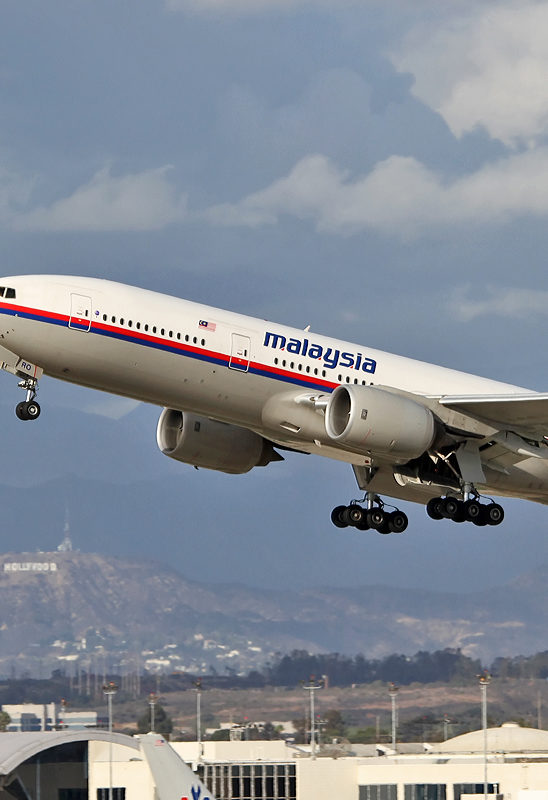
Air disasters and official communication: an high-wire balancing act between compassion and over-reaction
How to communicate in the wake of an airplane crash? Political leaders are expected to speak immediately after the tragedy occured if they don’t want to be charged of being conspicuously absent. To reflect the surrounding emotion, to give public opinion information on the causes of the accident and to indicate what measures the government intends to take are prerequisites to reflect the image of a committed State, fully aware of the gravity of the situation.
That is quite the reverse of the official communication that has been made around Malaysia Airlines’ MH370 flight: the plane mysteriously disappeared on March 8 after taking off from Kuala Lumpur and is still actively sought after. In a statement, the families spoke of “the unforgivable guilt” of the company, government and Malaysian military – officials that are not used to communicate with the media and that are therefore managing the communication in confusion, giving free rein to the wildest assumptions (hijacking, sabotage, pilot’s suicide, etc.) and leaving the families to face the tragedy alone.
To communicate rapidly and occupy the media space, but to say what? In the case of an aircraft, it can be a long time before the causes of the accident are identified. The search for the black boxes can take several days and their analysis several years, a time frame that is no longer acceptable, neither for the media, nor for the general public. In this social networking era where information is over-abundant, anyone – be it the journalist, the expert or the ordinary citizen – can engage in wild speculation and mass distribution. Faced with these multiple sources of information, the official communication must be even more cautious, consistent and substantiated as the slightest error can immediately discredit its legitimacy.
One can appreciate the difficulty of the exercise in the aftermath of the Air Algeria’s AH5017 crash in Northern Mali. The comparison between the public interventions of the government spokesperson and the Minister of Internal Affairs is, in this respect, quite instructive.
When Stéphane Le Foll, spokesman of the Government was invited to comment on the topic as the guest of the special edition of Europe 1, he obviously chose to adopt a strategy of prudence, even if that meant repeating over and over again that he could not give any answer at this stage. The journalist, on the other hand, was trying to get as much information as possible in order to feed his paper, and why not to create the buzz.
Journalist’s question: Are there any survivors? Minister’s response: “You are asking me a question I can not answer at this point as I do not have the information.”
Question: Were the black boxes found? Answer: ” I don’t have much information on that yet.”
Question: « the aircraft broke up », what does that mean exactly? The spokesman refused to comment on potentially gory details: ” Let’s not start commenting on each and every word … there is an investigation going on, we need to give it a little time. You will have the answers in due time, that’s it. “
The interviewer then tries a different angle of attack: the expert as a source of information that comes to challenge the official word: “The expert said that the weather explanation is insufficient …” The Government Spokesman remains on his field of competence: “I am not an expert so it’s not my place to comment.”
The Minister of the Interior, Bernard Cazeneuve, took a different stance when interviewed on RTL radio on the same day. Relying on official information, the press release distributed by the Elysee, he first reminded that the priority was to find the plane wreck, and that the French army has been mobilized to that end. About the plane that « broke up », he said: ” We believe that this aircraft crashed due to bad weather conditions, but no assumption can be ruled out as long as we don’t have the final outcomes of the investigation.”
If he makes an hypothesis, which is a potential information for the media (the bad weather conditions), he immediately takes it back, relegating it to the status of one among others: he is giving the germ of an explanation without creating an unnecessary hype. The underlying message being that the situation is under control.
Until light is shed on the tragedy, the official communication must occupy the stage, both with words and images. It is the strategy chosen by the Elysee: the president canceled his trip to Reunion island, spoke with manifest earnestness and emotion on the steps of the presidential palace, met the families of the French victims and led several crisis management meetings with images that were posted on the Elysee’s twitter account. Responsiveness, solemnity and sobriety, his communication style reflects the image of a Head of State standing on the frontline of the crisis management, whatever uncertainties remain on the tragedy.
By going as far as paying a three days tribute and ordering half-masting flags, the Elysée has somehow raised a controversy: charges of political exploitation and comparisons with other tragedies such as the Rio-Paris crash or rail accidents have not been slow in spreading on twitter. Will the Head of State have to show the same activism in the event of other national tragedies? This very question will inevitably arise when the next disaster occurs.
